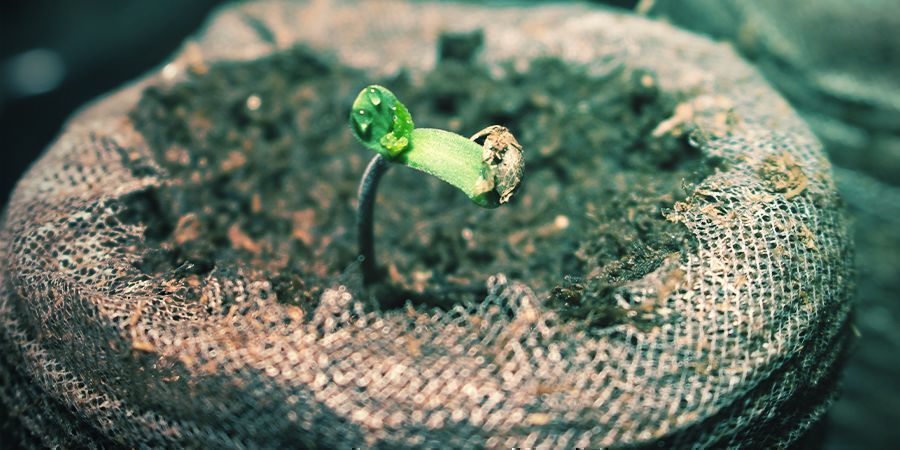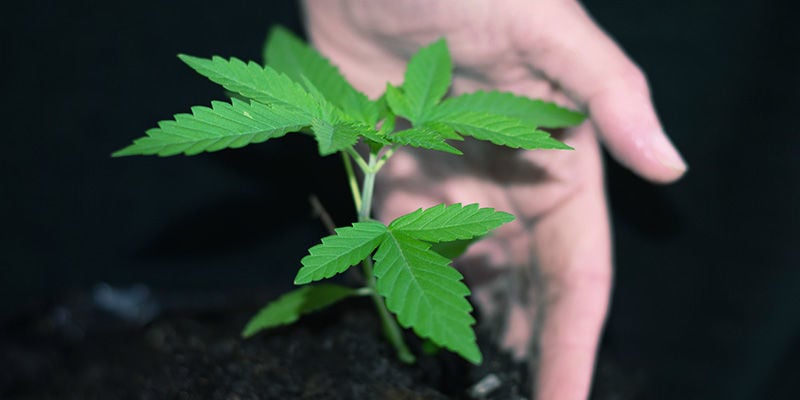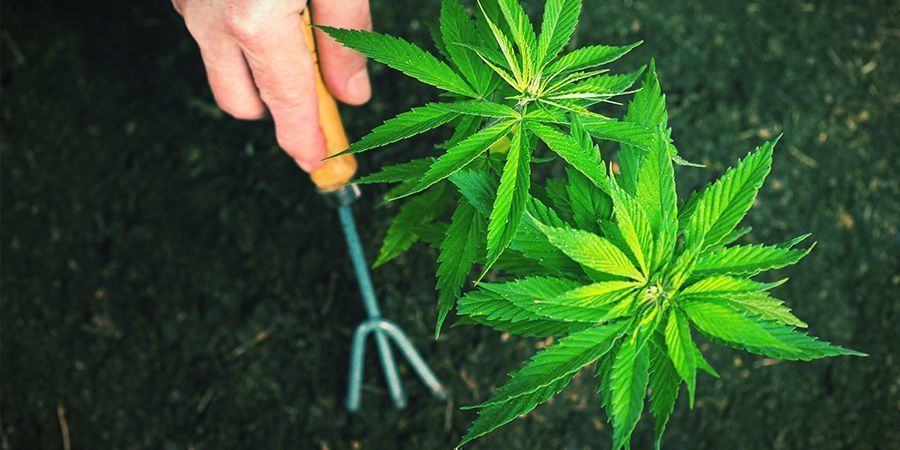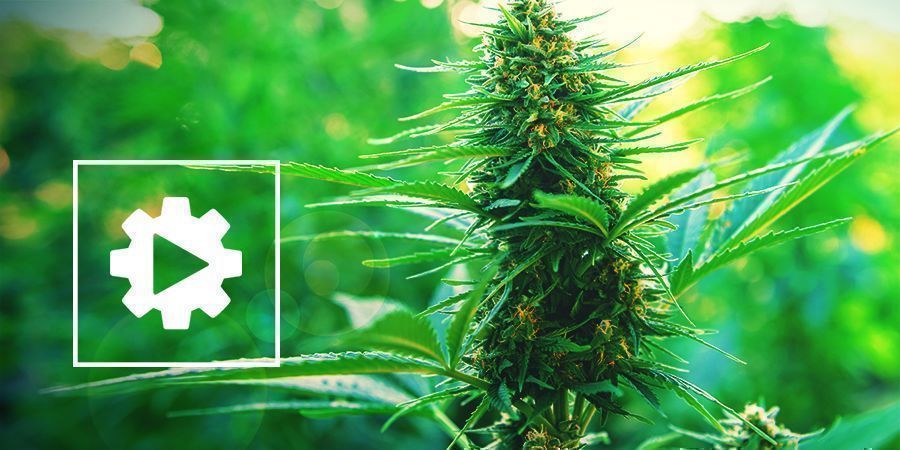
How To Successfully Transplant Autoflowering Cannabis Plants
If you've done some research into autoflowering cannabis strains, you might have heard people suggest that they can't be transplanted by any means. Now, it's certainly difficult, but it's not impossible in the slightest. As we'll explain, you just need to have precise timing, a gentle touch, and an intimate knowledge of autoflowering weed plants.
For the most part, thanks to their robust nature, compact size, rapid growing time, and tolerance of (almost) all lighting schedules, autoflowering varieties are the easiest cannabis plants to work with.
However, growers will also notice that autos can’t handle very much stress. Or, more specifically, they don't have the time to recover fully after a significantly stressful event. That makes things extra complicated if you find yourself needing to move your autoflowers to a larger pot. Rapid growth complicates this further, as waiting too long can lead to your plants getting root-bound in their containers.
For those reasons, growers should always start autoflowers in their final pot. If that’s not possible, however, you shouldn’t lose hope. It can be a complicated and sensitive process, but transplanting your autoflowering cannabis plants isn’t impossible by any means.
Understanding Autoflowering Cannabis Plants
The first step to properly caring for your autoflowers is understanding exactly what type of cannabis plant they are, and what they need.
Most people with basic cannabis knowledge are familiar with indicas and sativas; two subspecies of the Cannabis sativa plant. What many aren’t aware of, however, is the third: ruderalis.
To be fair, it’s not like ruderalis on its own is much to go head over heels for. Cannabis ruderalis, which is native to Siberia and other northern regions, bears small, low-THC buds and generally has a lacklustre appearance in comparison to commercial or even homegrown cannabis.
Its standout quality, however, is its ability to flower regardless of the lighting schedule. Since ruderalis evolved in areas with periods of either near-constant or near-absent sunlight, it has no need for seasonal adjustments. Thus, it evolved to start blooming upon reaching a certain age—the inspiration behind the term “autoflowering”.
For that reason, cannabis breeders started to obtain ruderalis seeds for the purpose of breeding with conventional indicas and sativas. The ultimate result? Genetics that retained the cannabinoid and terpene profile of the conventional parent alongside the autoflowering ability of the ruderalis parent. When these experiments first began, the results were not so impressive. Today’s autos, however, often look identical to photoperiod (conventional) plants once mature, and feel, taste, and smell the same as well.
Can You Transplant Autoflowering Cannabis Seedlings?

This genetic optimisation, however, doesn’t negate the fact that autoflowering plants don’t have as much time to recover from significant stress. Since they devote all their energy to growing as fast as possible, anything that interrupts the process has notable consequences.
Specifically, this makes transplanting far more complicated than it usually would be. Considering that, you might wonder whether it would be better to transplant your autos when they’re still seedlings. After all, as the root system will still be small and insignificant, wouldn’t that be better than transplanting a vegetating specimen with many roots? In this case, probably not. Since the seedling is so sensitive at this stage, you are more likely to cause irreparable damage, setting your young autoflowering plants up for an even harder time. It's best to wait until your plant has developed a few nodes with "true" leaves.
How Does Transplanting Affect Autoflowering Cannabis Plants?

As we’ve been going along, you’ve probably been wondering what the transplant process actually does to cannabis plants. As long as they get back in the soil soon enough, it’s like nothing even happened, right?
It may seem that simple on the surface, but the real trouble occurs at the roots. To elaborate, being lifted from the soil (or water, coco, etc.) traumatises the root system to the point of stunting growth. At worst, your plant may not start growing again for another week or more, which is huge given that the vegging state of autos is rarely longer than 4 weeks. That stress can be minimised, however, with good timing and technique.
When Is the Best Time to Transplant Autoflowering Cannabis Plants?

To start, when should you actually do the deed?
Well, as we said before, you don’t want to do it too early. In turn, you also don’t want your plant to outgrow its current pot or become too big to physically handle. Although the sweet spot will vary between each plant, wait until it is mature enough to be trained (has at least 3–5 nodes).
It’s not full speed ahead once it hits that sweet spot, though. Once the plant is sturdy yet movable, you’ll want to wait until right before the designated dark period (if you have one). You’ll also want to wait for the soil to slightly dry out, as that will make it far easier for you to get a hold of the plant.
How to Transplant Autoflowering Cannabis Plants

Once you feel the time has come, you’ll want to act fast. To make sure you can do exactly that, be sure you have every piece of equipment you need, and follow our guide through each step. Fortunately, you don’t need many things to manage this process.
Equipment
- The same soil your plant is currently growing in
- The final pot your plant will grow in
- Water to soak the soil you’ll be placing your plant in
That’s it! Everything else hinges on you transplanting as smoothly as possible.
Step-by-Step Guide
Without further ado, here’s how to transplant your autoflowering cannabis plants.
-
Half-fill your new pot up with soil.
-
If the pot containing your plant is plastic, gently press the sides to loosen up the roots.
-
Place your hand over the top of said pot and flip it upside down, softly loosening the pot and separating it from your plant and soil.
-
Immediately after, place the plant in your new pot without touching the roots. Any contact with them can cause damage and potential root rot.
-
Fill up the rest of the pot with soil, and gently press down on the new soil to ensure it and the roots are in full contact.
-
Water the plant heavily (don’t go crazy, but be generous), as this will help your roots penetrate the soil as they grow.
Plan Ahead to Avoid Transplanting Autos

Really, though, you should plan ahead to make sure you don’t have to do any of that. Even if perfectly transplanted, an autoflowering plant will almost never perform as well as one grown in its final pot from the start. Considering that, your best transplant-related strategy is planning ahead and making sure your autoflowers are planted in the same pot they’ll be in when harvested.
-
 5 min
6 March 2025
Top 10 autoflowering cannabis strains
Explore the world of autoflowering cannabis strains with our selection of the top 10 available on the market right now. Perfect for novice and experienced growers alike, these plants offer a...
5 min
6 March 2025
Top 10 autoflowering cannabis strains
Explore the world of autoflowering cannabis strains with our selection of the top 10 available on the market right now. Perfect for novice and experienced growers alike, these plants offer a...
-
 4 min
4 March 2025
Top 5 high-yielding autoflowering strains
Looking for high-yielding autoflowering cannabis strains? You're in the right place! Autoflowers are easy to grow, fast, and as potent as their photoperiod counterparts. In this article, we...
4 min
4 March 2025
Top 5 high-yielding autoflowering strains
Looking for high-yielding autoflowering cannabis strains? You're in the right place! Autoflowers are easy to grow, fast, and as potent as their photoperiod counterparts. In this article, we...
-
 6 min
23 March 2021
Top 10 Reasons To Grow Autoflowering Cannabis
The development of autoflowering strains revolutionized cannabis cultivation. Autos require minimal effort, finish ultra-fast and don’t need special lighting schedules - and yet produce a high...
6 min
23 March 2021
Top 10 Reasons To Grow Autoflowering Cannabis
The development of autoflowering strains revolutionized cannabis cultivation. Autos require minimal effort, finish ultra-fast and don’t need special lighting schedules - and yet produce a high...
-
 5 min
18 December 2020
How to Maximise Yields With Autoflowering Cannabis
Once associated with poor yields and reduced potency, modern autoflowering genetics tick all of these boxes, and then some. Autos now produce equally as powerful buds in large numbers, without...
5 min
18 December 2020
How to Maximise Yields With Autoflowering Cannabis
Once associated with poor yields and reduced potency, modern autoflowering genetics tick all of these boxes, and then some. Autos now produce equally as powerful buds in large numbers, without...
-
 7 min
4 December 2020
Are Autoflowering Cannabis Strains Less Potent Than Others?
Are autoflowers really less potent than photoperiod cannabis strains? We’ll uncover the truth about autoflowers and their potency in this article.
7 min
4 December 2020
Are Autoflowering Cannabis Strains Less Potent Than Others?
Are autoflowers really less potent than photoperiod cannabis strains? We’ll uncover the truth about autoflowers and their potency in this article.
-
 5 min
12 October 2020
What Is Cannabis Ruderalis?
You may know about the two main types of cannabis, indica and sativa, but did you know that there is a third type of cannabis—Cannabis ruderalis? Ruderalis is a variety with interesting...
5 min
12 October 2020
What Is Cannabis Ruderalis?
You may know about the two main types of cannabis, indica and sativa, but did you know that there is a third type of cannabis—Cannabis ruderalis? Ruderalis is a variety with interesting...
-
 3 min
27 June 2020
Do Autoflowers Need Nutrients?
Since autoflowers have different growing requirements than photoperiod cannabis, many growers wonder if their nutrient requirements are different too. Indeed, there are some important things to...
3 min
27 June 2020
Do Autoflowers Need Nutrients?
Since autoflowers have different growing requirements than photoperiod cannabis, many growers wonder if their nutrient requirements are different too. Indeed, there are some important things to...













 United States
United States











